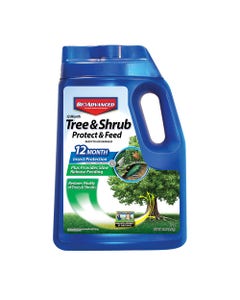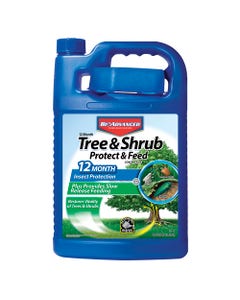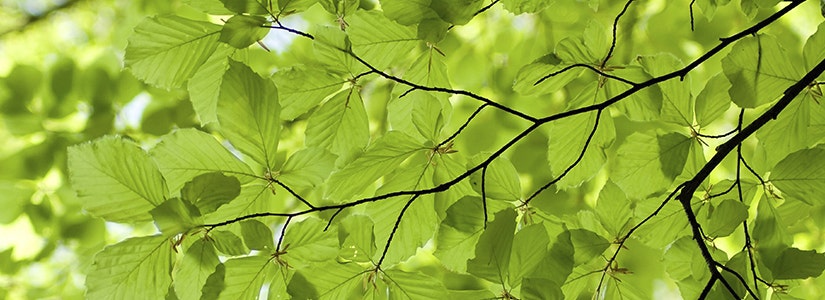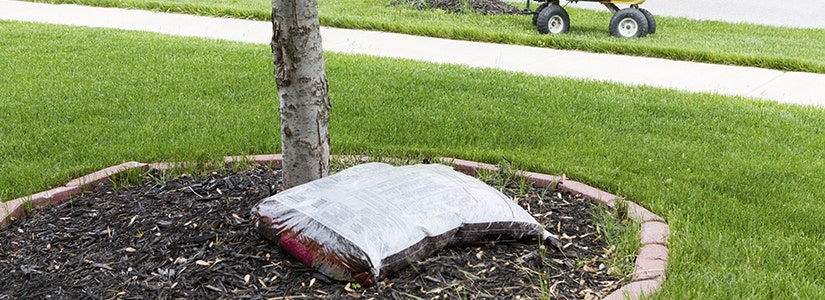

- Home
- Solution Center
- Learn
- Learn: Tree & Shrub
- Growing Trees: How To Choose A Tree
Growing Trees: How To Choose A Tree
Trees are the most valuable and hardest-working part of our landscape. They shade our homes and neighborhoods cutting energy costs and increase property values. Trees add beauty, reduce air pollution and prevent soil erosion. It's easy to find a reason for planting a tree. The hard part is choosing the right tree.
Young trees require special attention if you want them to become established landmarks in your landscape. The species you choose needs to be able to adapt to your climate, as well as to your specific planting site based on soil, sun exposure and resistance to area pests. We’re here to help you take the guesswork out of tree selection.
Why Are You Planting?
Before choosing a tree, think about why you're planting it. Reasons vary, but might include:
- Casting shade
- Creating a windbreak
- Adding beauty with flowers
- Providing wildlife habitat or food source (seeds, fruit)
- Giving your yard fall color
- Growing edible fruit
- Screening a view
- Building a family legacy
Different trees offer different benefits. Start by planning with a purpose, and you’ll be happier with the results. Don’t be swayed too much by a tree’s ornamental quality. While spring blooms or fall color are appealing, it’s more important to choose a well-adapted tree that will grow into a size and shape you prefer. Be sure and check the USDA Hardiness Zones your tree choice is rated for. A tree not rated for your zone probably won’t survive. For suggestions of what grows best in your area, check with your local nursery or local Cooperative Extension System office.
Deciduous Or Evergreen?
At this stage, also decide what type of tree you want. Deciduous trees drop their leaves in fall or winter. They're the trees that typically boast blazing fall color. Evergreen trees retain their foliage year-round. They add color to winter landscapes and provide a solid backdrop for perennials and ornamental grasses.
Where To Plant
Think carefully about where you plant and how you space your tree. Planting deciduous trees on the south, west or east sides of your home can provide summer shade and allow for warming winter sun. In fact, properly-placed deciduous trees can cut summer air conditioning costs up to 25 percent. Evergreens provide year-round privacy. Try planting them along the north side of your home as a windbreak to help cut winter heating bills. Don't forget to check for buried underground utilities (call 811).
Determine The Growing Conditions
Start with sunlight. Your yard might have full sun, morning sun or shade. Knowing the amount of light your tree will need can help you pick the location it should be planted. Planting in full sun means paying close attention to your tree’s water needs and the value of mulch. Planting in shade could mean root competition from large trees. Sunlight needs, just like hardiness zones, can be found on the plant label.
Then check the soil. Different trees do better in different types. In areas of new construction, soil may be filled with construction debris or heavy clay. Some soils may be rocky or sandy. Some will have a higher pH. The most accurate way to determine your soil type is to do a soil test. Ask a nursery specialist or your local Cooperative Extension System office how to test your soil and, if necessary, how to adjust the pH.
Consider water needs. How much supplemental irrigation your tree will need is an important factor, especially in dry summer areas, like the Southwest, or areas where droughts are common. Native or drought-tolerant trees can survive with minimum of water and make an ideal choice.
Finally, check the drainage of your planting site by digging the planting hole, filling it with water, letting it drain and then refilling it. If the water isn't gone in 6-8 hours, choose a tree that will survive in wet soils or select another planting site.
Measure Your Space
Make sure you have enough room for your tree to reach its mature height and spread. In general, place trees 10-15 feet away from your home's foundation and at least 5 feet away from other structures. You don’t want its root system, which grows as the tree does, to damage the foundation or any paths. If you have room, consider planting a few trees together, since some trees like birches work well in groups.
You also shouldn’t automatically favor the fastest-growing tree you can find. For example, a poplar or willow will grow very fast, but will often be short-lived and weak-wooded. Many fast-growing trees boast less than desirable traits, including weak limbs, short life spans or aggressive roots. Slower growers like oaks and ginkgoes will usually be stronger and longer lasting. In other words, going for the quick effect is often not the best choice.
Digging Your Planting Hole
When you’re ready to plant, dig a hole as deep as the tree’s rootball and twice as wide. Refill the hole with the same soil you took out and don’t amend the backfill soil. Research has shown this can slow the tree’s adaptation or establishment to its site. Let the tree sit about 1” above the surrounding soil level.
Don't Forget These Items
- Litter – Learn if your tree has falling fruit, blooms, leaves or bark that could create a mess on pavement or outdoor living surfaces.
- Pests – Research to discover if your tree is susceptible to diseases or pests. Purchase resistant varieties if possible.
- Growth speed – Because they have often been in pots longer, trees from bigger containers are often slower to become established than trees planted from smaller containers.
Check Locally
Choose a tree that's available locally. Visit garden centers and nurseries to review their selections. It's a good idea to do that early in the process as you're narrowing down your choices. You can also frequently find lists of suggested trees for your region from regional gardening books, city offices and your local Cooperative Extension System office.
















